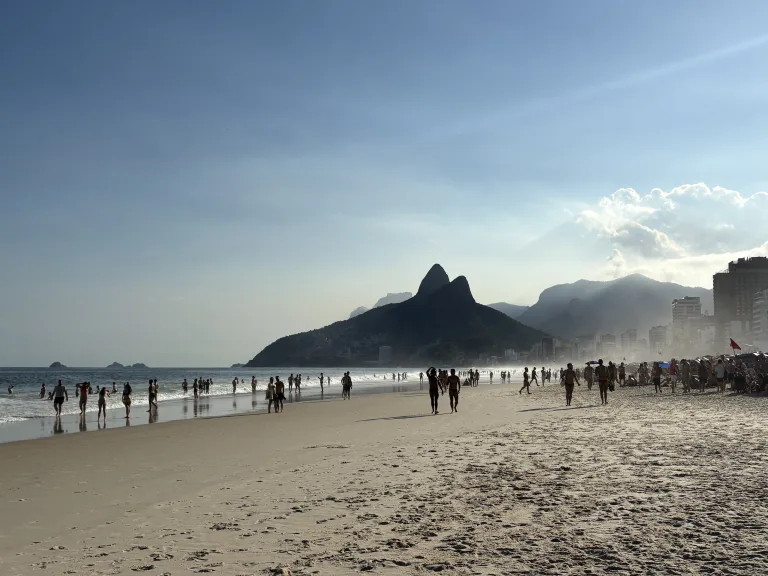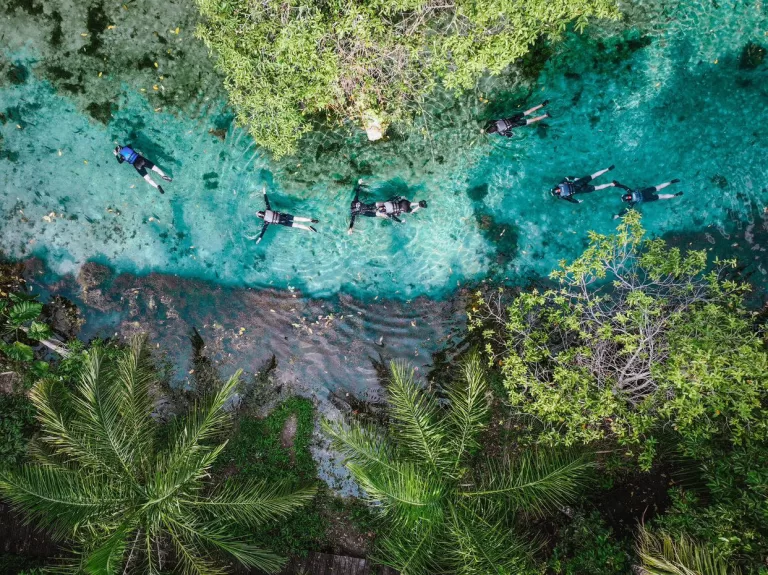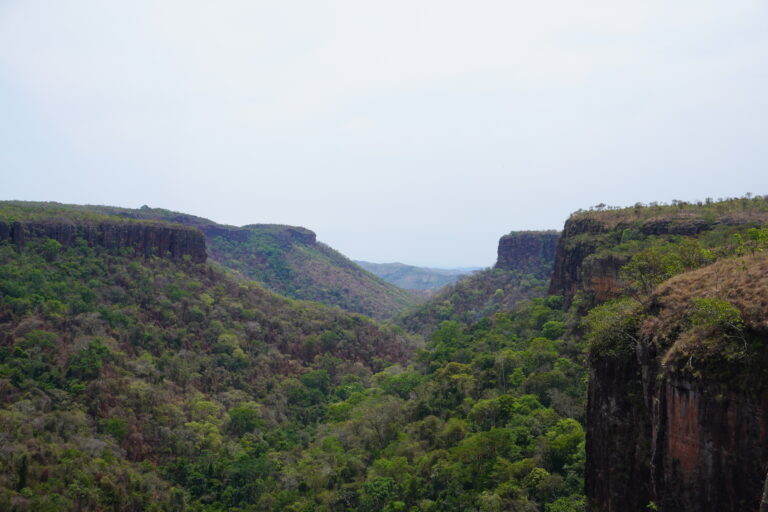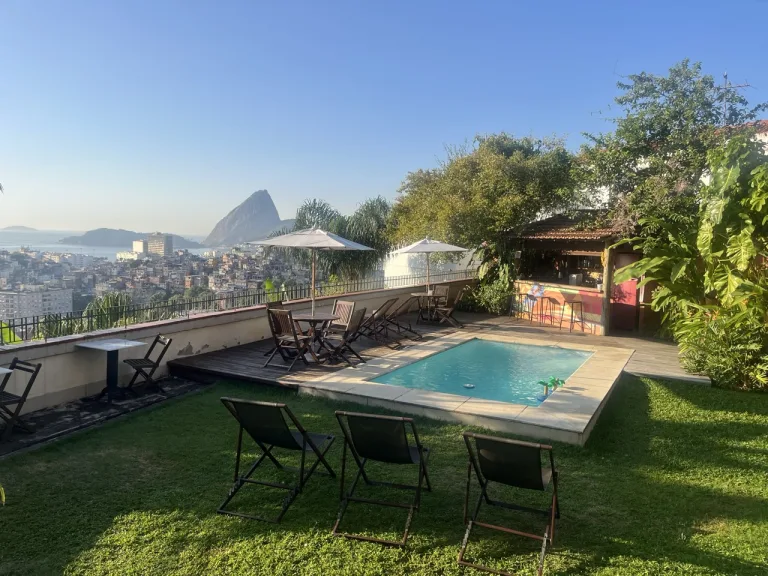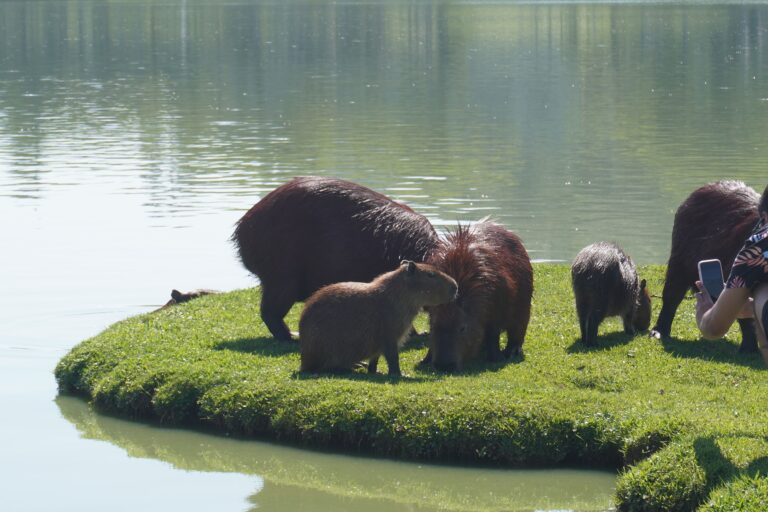Iguazu Falls: Everything you need to know before planning your trip
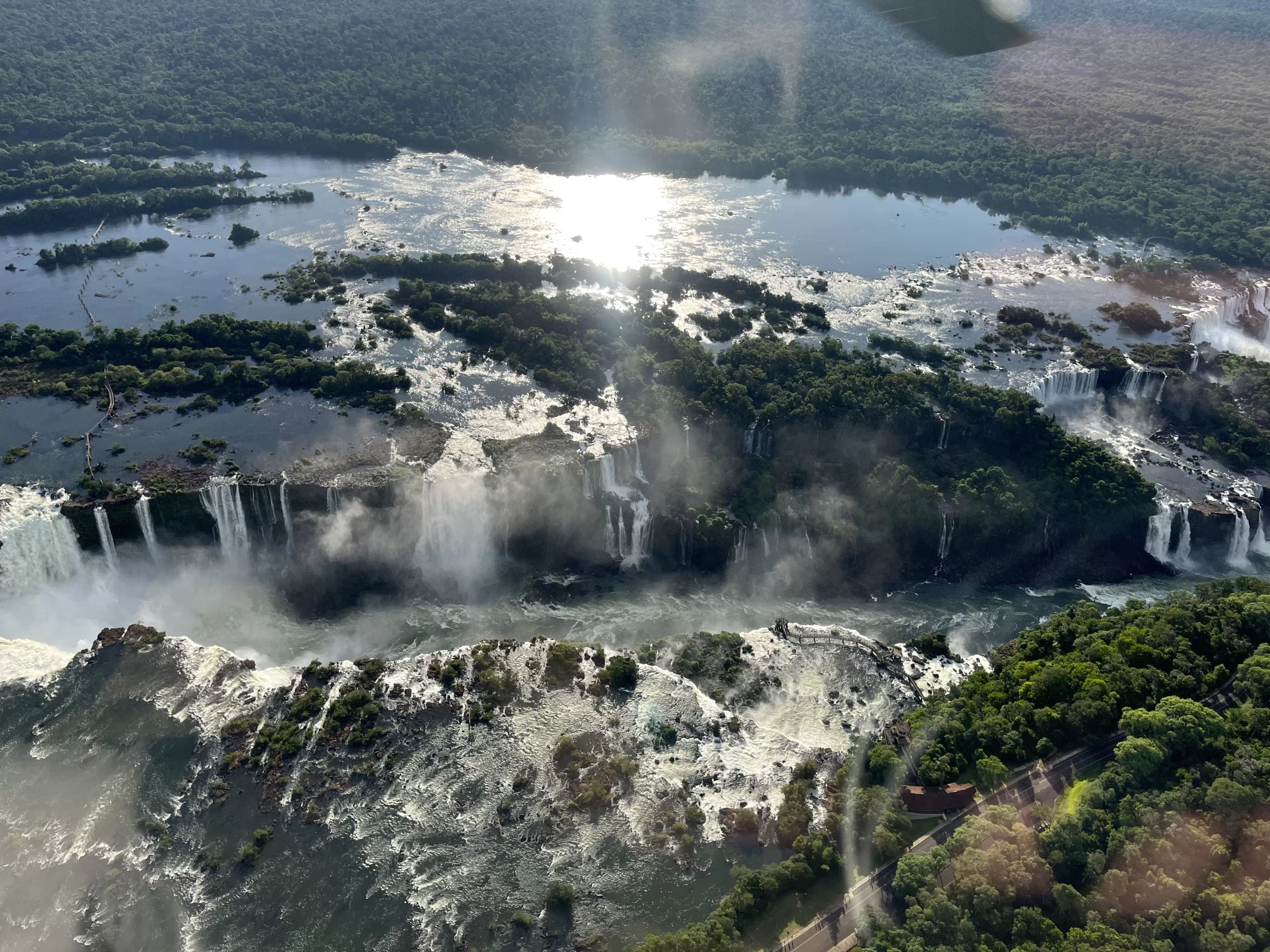
Are you thinking of visiting Iguazu Falls and wondering if it is worth the hype? Let’s honestly answer the most common questions about the famous Iguazu Falls!
Why is Iguazu famous?
Iguazu Falls is famous for its size, beauty, and nature preservation relevance. Let’s deep dive into each of the three main reasons that grant Iguazu Falls its well-deserved fame!
- Size: Iguazu Falls is the world’s largest waterfall system, having 275 waterfalls1 that measure up to 80 meters in height. The waterfalls stretch over 2.7 kilometers (1.7 miles)2 across the border between Brazil and Argentina.
- Beauty: The Iguazu Falls along with its Mata Atlantica environment is a view that makes me wonder if this is what heaven looks like. During the day, the sun hits the falls, creating many rainbows throughout the park. Also, walking through the trails, you can closely see the local fauna and flora. I was especially blown away by watching butterflies drink water from the natural water streams throughout the park. The beauty of Iguazu Falls is better explained through these no-filter pictures than words.
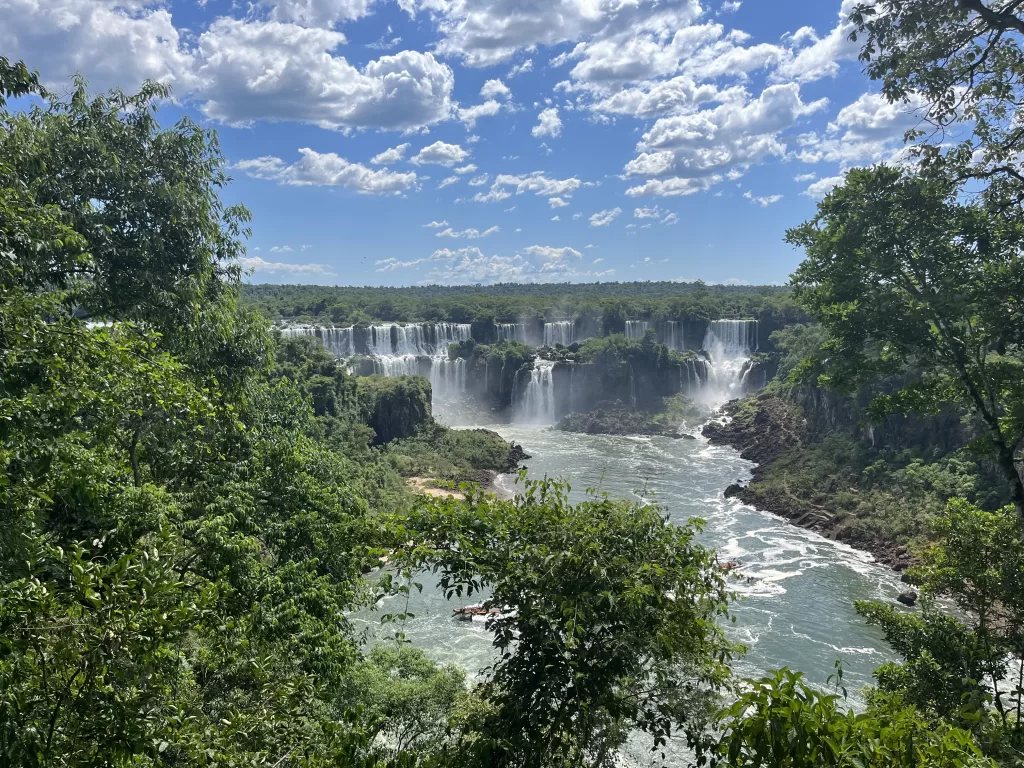
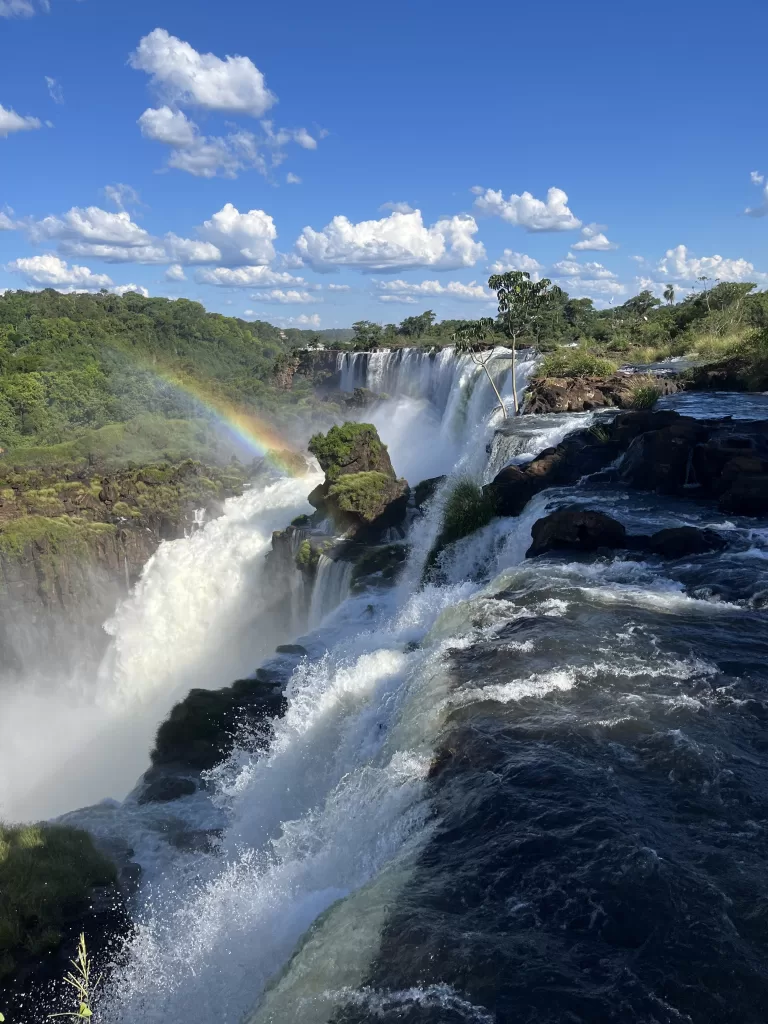
- Nature Preservation: Not only are the falls themselves special, but the national parks where they are located are also gems in nature preservation. For instance, Iguaçu National Park in Brazil is responsible for preserving a significant portion of the Mata Atlântica, a rich biome that now is only 8% of its original size in Brazil3.
For offering a unique and inclusive opportunity for visitors to interact with nature, Iguazu Falls deserves its fame and its spot on 7 Wonders of Nature list.
Is Iguazu better from Brazil or Argentina?
Having been on both sides of the falls, I have to say that the Argentinian side of Iguazu Falls is a lot prettier and larger than the Brazilian side. Also, the Argentinian side of the falls has a better infrastructure, making it the best side to explore the falls.
However, Foz do Iguaçu on the Brazilian side is the best base to stay near Iguazu Falls! The Brazilian side offers better accommodation options (including the incredible Belmond Hotel located inside the park) and many fun activities that are easy to access. In Brazil, you can visit an amazing bird park, go on helicopter tours, and join cultural events. The entrance to the Argentinian side of the falls is only a 50-minute drive from the Brazilian town of Foz do Iguaçu and can be visited on a day trip.
On top of that, as of 2024 and 2025, prices in Argentina have been stedily rising, making the prices of food and acommodations unreasonably high when compared to Brazil.
Can you cross from Brazil to Argentina through Iguazu Falls?
You cannot cross the border literally through the falls, but you can easily drive the Brazil/Argentina border. The drive between Foz do Iguaçu (the Brazilian base of Iguazu Falls) and Puerto Iguazu (the Argentinian base of Iguazu Falls) is approximately 50 minutes and can be done via taxi, which costs about R$150.
For ~R$32 you can also catch a bus, but it takes up to 2 hours, so grabbing a taxi is a way better way to cross the border!
I do not recommend crossing the border on a rental car, as it might incur lots of unnecessary costs and bureaucracy.
Be aware: Starting on April 10th, 2025, visitors from the USA, Canada, and Australia will require a visa to enter Brazil. Check the Brazilian International Relations website for up-to-date information on whether you require a visa or e-visa to enter the country.
Can you swim in Iguazu Falls?
Due to safety reasons, you cannot swim in the main falls at Iguazu Falls. However, there are two options for you to get wet while closely interacting with the amazing Iguazu Falls:
1. Experience Iguazu Falls through a boat tour
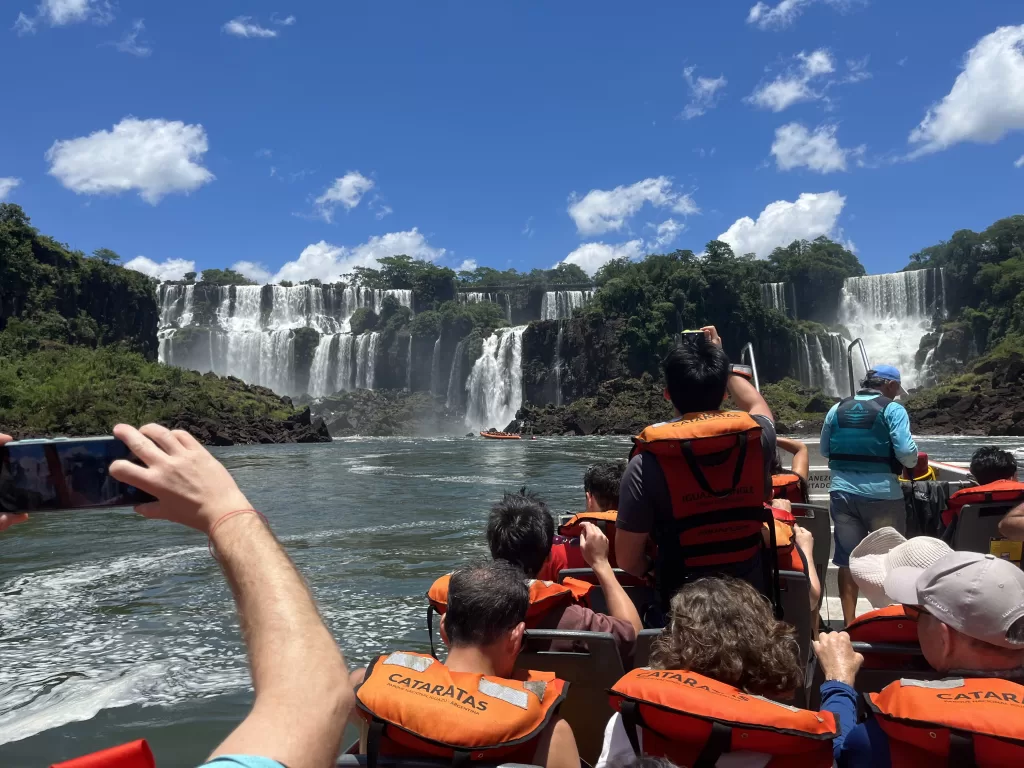
The boat tour in Iguazu Falls lets you feel the pressure of the water up close. Going on this boat tour gets you as soaked as if you were to jump in for a swim! Check out this video to see how up close we can get!
The current boat tour prices with Macuco Safari (the official tour operator in Brazil) are:
- R$386 for adults
- R$193 for children aged 7 to 11, students, and seniors ( ages 60+).
- Please be aware that your regular school ID does not grant you student-discounted tickets. Getting an ISIC card gives you access to student discounts for many activities in Brazil and the world. This standard international student identification card costs 12 euros and lasts 1 year.
- Free for children aged 0 to 6
Please be aware that the entrance to the Park in Brazil is an additional cost of R$100 per person for foreigners.
Pro tip: Do the boat tour on the Argentinian side if you do not have kids under 12! If you consider the blue dollar, doing the tour is about 50% cheaper on the Argentinian side. To learn more about the blue dollar, read our dedicated post! Also, the Argentinian boat tour takes you very close to giant waterfalls that cannot be accessed by the Brazilian boats. The only downside to the Argentinian tour is that kids under 12 are not allowed on the adventure. If you are traveling with kids, the Brazillian tour with Macuco safari is the only way for the whole family to enjoy this fantastic tour.
2. Swim in hidden small waterfalls at Iguazu Falls
There are local tours that take you to smaller-scale waterfalls in the middle of the jungle. Iguassu Secret Falls is a well-known Brazilian tour company that safely takes you for a swim in some of the hidden waterfalls.
You should know: The region around Iguazu Falls can get quite cold during fall and winter. Between the months of July and September, it might be best to hold off on any tours that get you wet. Over this period, temperatures range between 13°C (55°F) and 32°C (90°F).
How much time do you need in Iguazu Falls?
In 3 days you can enjoy the major attractions in a chill pace. In my opinion, the best way to visit Iguazu Falls is through the following itinerary:
Day 1 – Visit the Argentinian side of Iguazu
Go on a day trip to visit the Argentinian Side of Iguazu and enjoy an Argentinian steak dinner.
Pro tip: Stay in the park until it closes! I observed that most tourists left about 30 minutes before closure, and for that half an hour I got to enjoy many of the falls by myself!
Pro tip: The Argentinian side of Iguazu Falls offers a tour named “Walk in the Full Moon”, where a small group of visitors can go on a night tour through the falls. The tour price tag is on the higher side at 85,000 ARS per person, but I do recall my Brazilian high school geography teacher preaching about it to the whole class!
Day 2 – Visit the Brazilian side of Iguazu
Explore the Brazilian side of Iguazu during the day and enjoy the night at Triplice Fronteira. Triplice Fronteira is a cultural hotspot as it is the point where Brazil, Paraguay, and Argentina meet!
Pro tip: Iguaçu National Park in Brazil offers a range of unique experiences in the falls, such as dawn tours, sunset tours, and even night access with pasta dinner!
Day 3 – Go on one of the unique local tours
Select one or two of the local activities that entertain you the most! I highly recommend:
1. Parque das Aves on the Brazilian Side
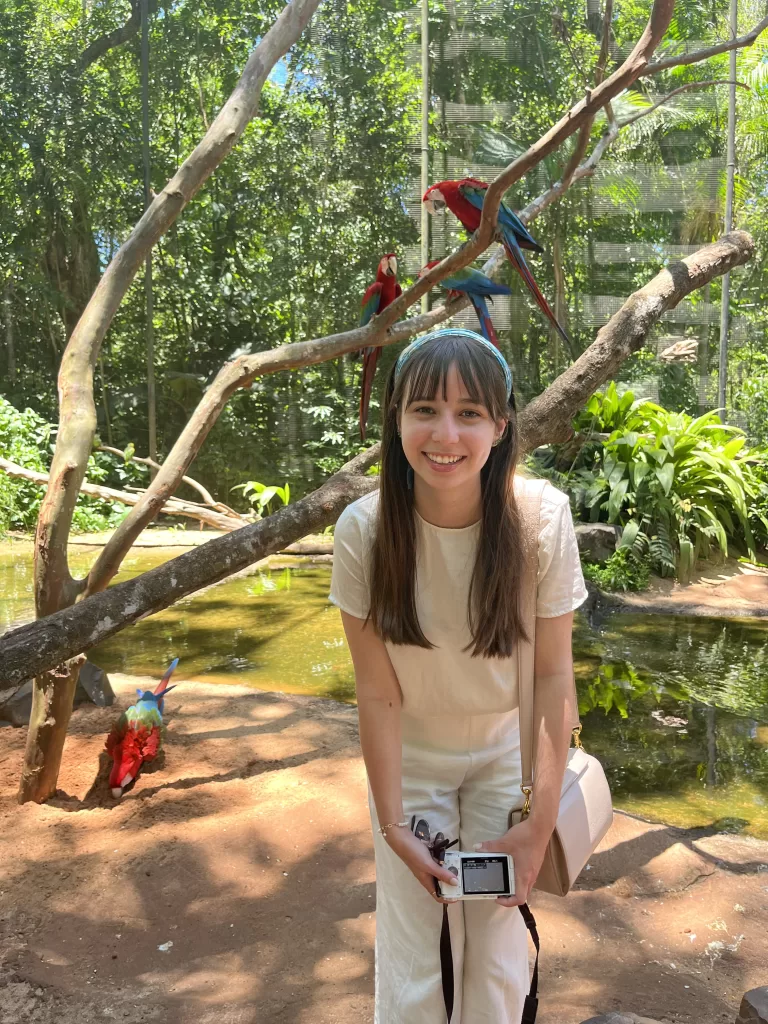
At Parque das Aves, you can see and interact up close with many local birds, including the classic Macaw. If you are very into birds, they offer an exclusive (and pricey) tour in the morning where you can get a step closer to them. Check their website to decide which of the available ticket options works best for you!
2. Helicopter tour over Iguazu Falls
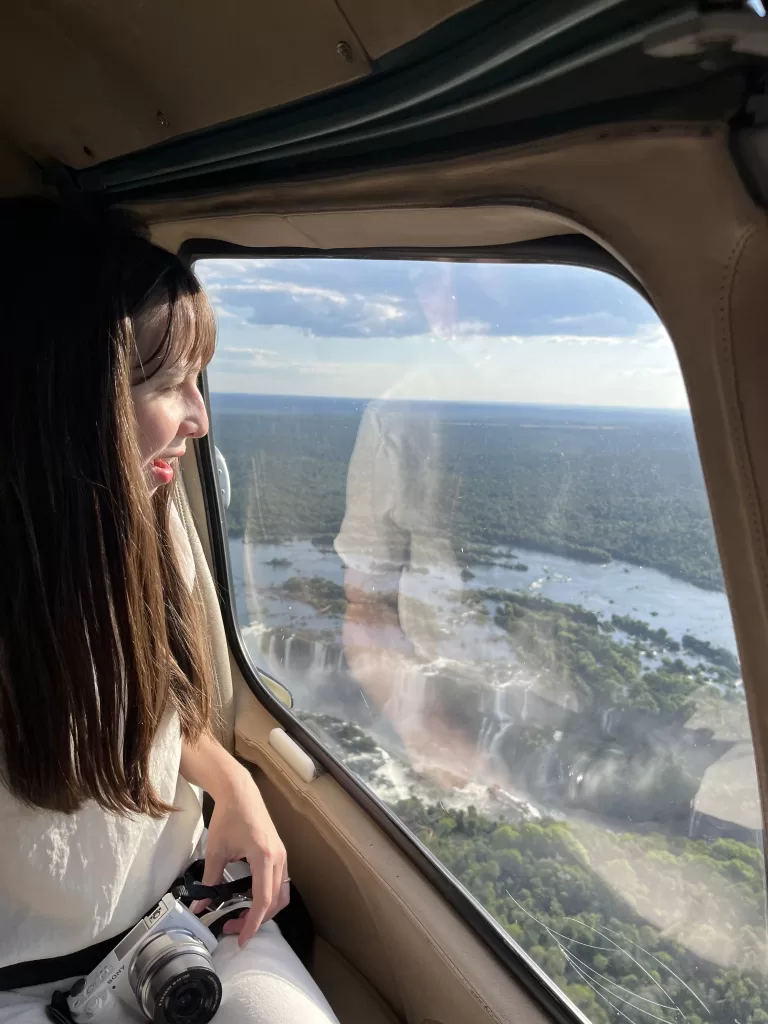
Helicopter tours are not unreasonably expensive in Iguazu. I went on the 10-minute tour with Helisul Experience, which costs R$610 per person. I genuinely enjoyed the tour, and found 10 minutes just long enough to enjoy the view of the falls! The only downside of this tour is that it is first-come first-serve, so you might find yourself waiting in line for a long time during peak hours.
3. Usina de Itaipu hydropower plant
Itaipu is a must-visit for renewable energy and engineering enthusiasts. This hydropower plant is the biggest source of renewable energy in the world. It covers 86% of Paraguay’s power consumption and 6% of Brazil’s. Itaipu has a range of tour options, with the basic tour starting at R$58 per adult.
Is Iguazu Falls worth it?
Iguazu Falls is absolutely worth it! In my opinion, the beauty of the falls is unmatched, even when compared to Niagara Falls. In Iguazu Falls, you can see the stunning falls, dozens of rainbows, butterflies, and birds. The tour offerings in the region are diverse and extremely fun, serving both adventure-driven and family-focused travelers.
Bonus: If you plan to visit Brazil, check out my posts on another location worth visiting: Lençóis Maranhenses National Park. This park full of dunes and blue-water pools is the only other location I’ve visited that compares in beauty to Iguazu Falls.


